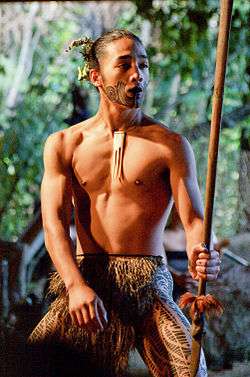Māori people
The Māori (/ˈmaʊri/; Māori pronunciation: [ˈmaːɔɾi] (![]()
.jpg) Māori performing a haka (2012) | |
| Regions with significant populations | |
|---|---|
| New Zealand | 775,836 (2018 census)[1] |
| Australia | 142,107 (2016 census)[2] |
| United Kingdom | approx. 8,000 (2000)[3] |
| United States | 3,500 (2000)[4] |
| Canada | 2,500 (2016)[5] |
| Other regions | approx. 8,000[3] |
| Languages | |
| Māori, English | |
| Religion | |
| Mainly Christian or irreligious Rātana Māori religions | |
| Related ethnic groups | |
| other Polynesian peoples | |
| Māori topics |
|---|
 |
|
Society
|
|
Lists
|
|
|
The arrival of Europeans in New Zealand, starting in the 17th century, brought enormous changes to the Māori way of life. Māori people gradually adopted many aspects of Western society and culture. Initial relations between Māori and Europeans were largely amicable, and with the signing of the Treaty of Waitangi in 1840, the two cultures coexisted. Rising tensions over disputed land sales led to conflict in the 1860s, and massive land confiscations. Social upheaval, and epidemics of introduced disease took a devastating toll on the Māori population, which fell dramatically. By the start of the 20th century, the Māori population had begun to recover, and efforts have been made to increase their standing in wider New Zealand society and achieve social justice.
Traditional Māori culture has thereby enjoyed a significant revival, which was further bolstered by a Māori protest movement that emerged in the 1960s. However, disproportionate numbers of Māori face significant economic and social obstacles, and generally have lower life expectancies and incomes compared with other New Zealand ethnic groups. They suffer higher levels of crime, health problems, and educational under-achievement. A number of socioeconomic initiatives have been instigated with the aim of "closing the gap" between Māori and other New Zealanders. Political and economic redress for historical grievances is also ongoing (see Treaty of Waitangi claims and settlements).
In the 2018 census, there were 775,836 people in New Zealand identifying as Māori, making up 16.5 per cent of the national population. They are the second-largest ethnic group in New Zealand, after European New Zealanders ("Pākehā"). In addition, more than 140,000 Māori live in Australia. The Māori language is spoken to some extent by about a fifth of all Māori, representing 3 per cent of the total population. Māori are active in all spheres of New Zealand culture and society, with independent representation in areas such as media, politics and sport.
Etymology
In the Māori language, the word māori means "normal", "natural" or "ordinary". In legends and oral traditions, the word distinguished ordinary mortal human beings—tāngata māori—from deities and spirits (wairua).[9][i] Likewise, wai māori denotes "fresh water", as opposed to salt water. There are cognate words in most Polynesian languages,[10] all deriving from Proto-Polynesian *ma(a)qoli, which has the reconstructed meaning "true, real, genuine".[11][12]
Naming and self-naming
Early visitors from Europe to New Zealand generally referred to the indigenous inhabitants as "New Zealanders" or as "natives".[13] The Māori used the term Māori to describe themselves in a pan-tribal sense.[ii] Māori people often use the term tangata whenua (literally, "people of the land") to identify in a way that expresses their relationship with a particular area of land; a tribe may be the tangata whenua in one area, but not in another.[14] The term can also refer to the Māori people as a whole in relation to New Zealand (Aotearoa) as a whole.
Who is considered Māori has not always been clear from a Pākehā perspective. For electoral purposes before 1974, the government required documented ancestry to determine the status of "a Māori person" and only those with at least 50% Māori ancestry were allowed to choose which seats they wished to vote in. The Māori Affairs Amendment Act 1974 changed this, allowing individuals to self-identify as to their cultural identity. Similarly, until 1986 the census required at least 50 per cent Māori 'blood' to claim Māori affiliation. Currently in all contexts authorities generally require some documentation of ancestry or continuing cultural connection (such as acceptance by others as being of the people); but no minimum "blood" requirement.[15][iii]
History
Origins from Polynesia
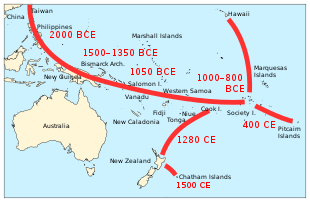
No credible evidence exists of pre-Māori settlement of New Zealand; on the other hand, compelling evidence from archaeology, linguistics, and physical anthropology indicates that the first settlers migrated from Polynesia and became the Māori.[16][17] Evidence indicates that their ancestry (as part of the larger group of Austronesian peoples) stretches back 5,000 years, to the indigenous peoples of Taiwan. Polynesian people settled a large area encompassing Samoa, Tahiti, Hawaiʻi, Easter Island (Rapa Nui) – and finally New Zealand.[18]
There may have been some exploration and settlement before eruption of Mount Tarawera in about 1315, based on finds of bones from Polynesian rats and rat-gnawed shells,[19] and evidence of widespread forest fires in the decade or so earlier;[20][21] but the most recent evidence points to the main settlement occurring as a planned mass migration somewhere between 1320 and 1350.[16] This broadly aligns with analyses from Māori oral traditions, which describe the arrival of ancestors in a number of large ocean-going canoes (waka) in around 1350.[22][23]
Early history

The earliest period of Māori settlement, known as the "Archaic", "Moahunter" or "Colonisation" period, dates from c. 1300 to c. 1500. The early Māori diet included an abundance of moa and other large birds and fur seals that had never been hunted before. This Archaic period is known for its distinctive "reel necklaces",[24] and also remarkable for the lack of weapons and fortifications typical of the later "Classic" Māori.[25] The best-known and most extensively studied Archaic site, at Wairau Bar in the South Island,[26][27] shows evidence of occupation from early-13th century to the early-15th century.[28] It is the only known New Zealand archaeological site containing the bones of people who were born elsewhere.[28]
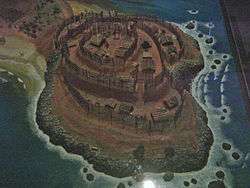
Factors that operated in the transition to the Classic period (the culture at the time of European contact) include a significantly cooler period from 1500,[29] and the extinction of the moa and of other food species.[30][31][32][33][34]
The Classic period is characterised by finely-made pounamu (greenstone) weapons and ornaments; elaborately carved war canoes and wharenui (meeting houses).[35] A fierce warrior culture included hillforts known as pā[36] and cannibalism.[37][38][39]
Around the year 1500 a group of Māori migrated east to the Chatham Islands and developed into a people known as the Moriori,[40] with pacifism a key part of their culture.[41]
Contact with Europeans

The first European explorers to New Zealand were Abel Tasman, who arrived in 1642; Captain James Cook, in 1769; and Marion du Fresne in 1772. Initial contact between Māori and Europeans proved problematic and sometimes fatal, with Tasman having four of his men killed and probably killing at least one Māori - without ever landing.[42] Cook's men shot at least eight Māori within three days of his first landing,[43][44] although he later had good relations with Māori. Three years later, after a promising start, du Fresne and 26 men of his crew were killed. From the 1780s, Māori also increasingly encountered European and American sealers, whalers and Christian missionaries. Relations were mostly peaceful, although marred by several further violent incidents, the worst of which was the Boyd massacre and subsequent revenge attacks.[45]
European settlement in New Zealand began in the early 19th century, leading to an extensive sharing of culture and ideas. Many Māori valued Europeans, whom they called "Pākehā", as a means to acquire Western knowledge and technology. Māori quickly adopted writing as a means of sharing ideas, and many of their oral stories and poems were converted to the written form.[46] The introduction of the potato revolutionised agriculture, and the acquisition of muskets[47] by Māori iwi led to a period of particularly bloody intertribal warfare known as the Musket Wars, in which many groups were decimated and others driven from their traditional territory.[48] The pacifist Moriori in the Chatham Islands similarly suffered massacre and subjugation in an invasion by some Taranaki iwi.[49] At the same time, the Māori suffered high mortality rates from Eurasian infectious diseases, such as influenza, smallpox and measles, which killed an estimated 10 to 50 per cent of Māori.[50][51]
.jpg)
By 1839, estimates placed the number of Europeans living in New Zealand as high as 2,000,[52] and the British Crown acceded to repeated requests from missionaries and some Māori chiefs (rangatira) to intervene. The British government sent Royal Navy Captain William Hobson to negotiate a treaty between the British Crown and the Māori, which became known as the Treaty of Waitangi. Starting from February 1840, this treaty was signed by the Crown and 500 Māori chiefs from across New Zealand.[53][54] The Treaty gave Māori the rights of British subjects and guaranteed Māori property rights and tribal autonomy, in return for accepting British sovereignty and the annexation of New Zealand as a colony in the British Empire.[55] However, disputes continue over aspects of the Treaty of Waitangi, including wording differences in the two versions (in English and Māori), as well as misunderstandings of different cultural concepts.[56]
Nevertheless, relations between Māori and Europeans during the early colonial period were largely peaceful. Many Māori groups set up substantial businesses, supplying food and other products for domestic and overseas markets. When violence did break out, as in the Wairau Affray, Flagstaff War, Hutt Valley Campaign and Wanganui Campaign it was generally limited and concluded with a peace treaty. However, by the 1860s rising settler numbers and tensions over disputed land purchases led to the later New Zealand wars, fought by the colonial government against numerous Māori iwi using local and British Imperial troops, and some allied iwi. These conflicts resulted in the colonial government confiscating tracts of Māori land as punishment for what were called "rebellions". Pākehā (European) settlers would occupy the confiscated land.[57] Several minor conflicts also arose after the wars, including the incident at Parihaka in 1881 and the Dog Tax War from 1897–98. The Native Land Court was also established to transfer Māori land from communal ownership into individual title as a means to assimilation and to facilitate greater sales to European settlers.[58]
Decline and revival
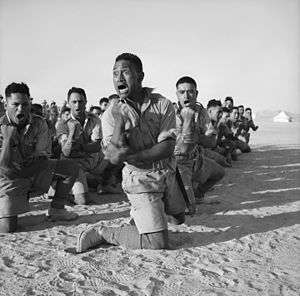
By the late 19th century a widespread belief existed amongst both Pākehā and Māori that the Māori population would cease to exist as a separate race or culture, and become assimilated into the European population.[59] In the 1896 census, New Zealand had a Māori population of 42,113, by which time Europeans numbered more than 700,000.[60]
However, the decline did not continue and the Māori population continued to recover in the 20th centuries. Influential Māori politicians such as James Carroll, Āpirana Ngata, Te Rangi Hīroa and Maui Pomare aimed to revitalise the Māori people after the devastation of the previous century. They believed the future path called for a degree of assimilation,[61] with Māori adopting European practices such as Western medicine and education (especially learning English), while also retaining traditional cultural practices. Māori also fought during both World Wars in specialised battalions (the Māori Pioneer Battalion in WWI and the 28th (Māori) Battalion in WWII). Māori were also badly hit by the 1918 influenza epidemic, with death rates for Māori being 4.5 times higher than for Pākehā. After World War II, te reo Māori use declined steeply in favour of English.
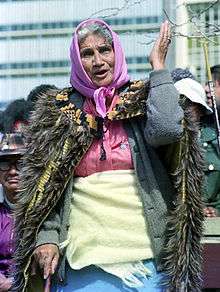
Since the 1960s, Māoridom has undergone a cultural revival[62] concurrent with activism for social justice and a protest movement.[63] Kōhanga reo (Māori language pre-schools) were established in 1982 to promote Māori language use and halt the decline in its use.[64] Two Māori language television channels broadcast content in the Māori language,[65][66] while words such as "kia ora" have entered widespread use in New Zealand English.[67]
Government recognition of the growing political power of Māori and political activism have led to limited redress for historic land confiscations. In 1975 the Crown set up the Waitangi Tribunal to investigate historical grievances,[68] and since the 1990s the New Zealand government has negotiated and finalised treaty settlements with many iwi across New Zealand. By June 2008 the government had provided over NZ$900 million in settlements, much of it in the form of land deals.[69] There is a growing Māori leadership who are using these settlements as an investment platform for economic development.[70]
Despite a growing acceptance of Māori culture in wider New Zealand society, treaty settlements have generated significant controversy. Some Māori have argued that the settlements occur at a level of between 1 and 2.5 cents on the dollar of the value of the confiscated lands, and therefore do not represent adequate redress. Conversely, some non-Māori denounce the settlements and socioeconomic initiatives as amounting to race-based preferential treatment.[71] Both of these sentiments were expressed during the New Zealand foreshore and seabed controversy in 2004.[72][73]
Demographics
There were 775,836 people identifying as being part of the Māori ethnic group at the 2018 New Zealand census, making up 16.5% of New Zealand's population. This is an increase of 177,234 people (29.6%) since the 2013 census, and an increase of 210,507 people (37.2%) since the 2006 census. The large increase between the 2013 and 2018 census was mainly due to Statistics New Zealand adding ethnicity data from other sources (previous censuses, administrative data, and imputation) to the 2018 census data to reduce the number of non-responses.[74]
There were 383,019 males and 392,820 females, giving a sex ratio of 0.975 males per female. Of the total population, 248,784 people (32.1%) were aged under 15 years, 193,146 (24.9%) were 15 to 29, 285,657 (36.8%) were 30 to 64, and 48,252 (6.2%) were 65 or older.[75]
In the 2013 census, 598,605 people identified as being part of the Māori ethnic group, accounting for 14.9 per cent of the New Zealand population, while 668,724 people (17.5 per cent) claimed Māori descent.[76] Of those identifying as Māori, 278,199 people identified as of sole Māori ethnicity while 260,229 identified as of both European and Māori ethnicity, due to the high rate of intermarriage between the two cultures.[77] Under the Māori Affairs Amendment Act 1974, a Māori is defined as "a person of the Māori race of New Zealand; and includes any descendant of such a person".[78] The largest iwi by population was Ngāpuhi (125,601), followed by Ngāti Porou (71,049), Ngāi Tahu (54,819) and Waikato (40,083). However, over 110,000 people of Māori descent could not identify their iwi.[76]
Outside of New Zealand, a large Māori population exists in Australia, estimated at 155,000 in 2011.[79] In 2007 the Māori Party suggested a special seat should be created in the New Zealand parliament representing Māori in Australia.[80] Smaller communities also exist in the United Kingdom (approx. 8,000), the United States (up to 3,500) and Canada (approx. 1,000).[3][81][82]
Historically, the Māori population around the late 18th century was estimated by James Cook to be 100,000, a figure which demographer Ian Pool agreed with. Historian Michael King suggests a slightly higher figure of 110,000 is more likely.[83]
Culture
Traditional culture

Julius von Haast incorrectly interpreted the earliest archaeological remains as belonging to a pre-Māori Paleolithic people; later researchers, notably Percy Smith, magnified such theories into an elaborate scenario with a series of sharply-defined cultural stages which had Māori arriving in a Great Fleet in 1350 and replacing the so-called "moa-hunter" culture with a "classic Māori" culture based on horticulture.[84] However, the archaeological record indicates a gradual evolution of culture.[85] In the course of a few centuries, the growing population led to competition for resources and an increase in warfare and an increased frequency of fortified pā. Various systems also arose aimed to conserve resources; most of these, such as tapu and rāhui, used religious or supernatural threats to discourage people from taking species at particular seasons or from specified areas.
Warfare between tribes was common, and Māori would sometimes eat their conquered enemies.[86] Performing arts such as the haka developed from their Polynesian roots, as did carving and weaving. Regional dialects arose, with differences in vocabulary and in the pronunciation of some words but the language retained enough similarities to other Eastern Polynesian languages for Tupaia, the Tahitian navigator on James Cook's first voyage in the region to act as an interpreter between Māori and the crew of the Endeavour.
Belief and religion
Traditional Māori beliefs have their origins in Polynesian culture. Many stories from Māori mythology are analogous with stories across the Pacific Ocean. Polynesian concepts such as tapu (sacred), noa (non-sacred), mana (authority/prestige) and wairua (spirit) governed everyday Māori living. These practices remained until the arrival of Europeans, when much of Māori religion and mythology was supplanted by Christianity. Today, Māori "tend to be followers of Presbyterianism, The Church of Jesus Christ of Latter-day Saints (Mormons), or Māori Christian groups such as Rātana and Ringatū",[88] but with Catholic, Anglican and Methodist groupings also prominent.[89][90] Islam is estimated as the fastest growing religion among Māori,[91] yet Māori Muslims constitute a very small proportion of Māori. At the 2013 New Zealand census, 8.8 per cent of Māori were affiliated with Māori Christian denominations and 39.6 per cent with other Christian denominations; 46.3 per cent of Māori claimed no religion. Proportions of Christian and irreligious Māori are comparable with European New Zealanders.[92]
Regardless of their professed beliefs, many Māori people still observe spiritual traditions such as tapu and noa. Certain objects, areas, or buildings are tapu (spiritually restricted), and must be made noa (unrestricted) by ceremonial action.[93] It is common practice, for instance, to remove one's shoes before entering a wharenui (meeting-house) in token of respect for the ancestors who are represented and spiritually present within the wharenui.[94] Another spiritual ritual is hurihanga takapau (purification), practised when fishing to ensure there is no tapu on the fish.[95]
Performing arts
Kapa haka (literally "haka team") is a traditional Māori performance art, encompassing many forms, that is still popular today. It includes haka (posture dance), poi (dance accompanied by song and rhythmic movements of the poi, a light ball on a string), waiata-ā-ringa (action songs) and waiata koroua (traditional chants). The haka was originally performed when warriors of different, and potentially opposing, tribes met for peaceful purposes. Intimidating tongue and facial gestures, as well as displays of weapons and fighting moves, indicated the performing group's readiness to defend themselves if the other group did not intend peace.[96] A haka is a critical step in the performance of a pōwhiri (welcoming ceremony).[97]
From the early 20th century kapa haka concert parties began touring overseas. Since 1972 there has been a regular competition, the Te Matatini National Festival, organised by the Aotearoa Traditional Māori Performing Arts Society. Māori from different regions send representative groups to compete in the biennial competition. There are also kapa haka groups in schools, tertiary institutions and workplaces. It is also performed at tourist venues across the country.[98][99]
Literature and media
Like other cultures, oral folklore was used by Māori to preserve their stories and beliefs across many centuries. In the 19th century, European-style literacy was brought to the Māori, which led to Māori history documentation in books, novels and later television. Māori language use began to decline in the 20th century with English as the language through which Māori literature became widespread.
Notable Māori novelists include Patricia Grace, Witi Ihimaera and Alan Duff. Once Were Warriors, a 1994 film adapted from a 1990 novel of the same name by Alan Duff, brought the plight of some urban Māori to a wide audience. It was the highest-grossing film in New Zealand until 2006,[100][101] and received international acclaim, winning several international film prizes.[102] While some Māori feared that viewers would consider the violent male characters an accurate portrayal of Māori men, most critics praised it as exposing the raw side of domestic violence.[103]

Well-known Māori actors and actresses include Temuera Morrison, Cliff Curtis, Lawrence Makoare, Manu Bennett, and Keisha Castle-Hughes. They appear in films such as Whale Rider, Star Wars: Episode III – Revenge of the Sith, The Matrix, King Kong, River Queen, The Lord of The Rings, Rapa Nui, and others, and famous television series like Xena: Warrior Princess, Hercules: The Legendary Journeys, The Lost World and Spartacus: Blood and Sand. In most cases their roles in Hollywood productions have them portraying ethnic groups other than Māori.
In the 2010s Māori actor-director Taika Waititi rose to global fame with the Marvel Cinematic Universe film Thor: Ragnarok, in which he played an alien named Korg,[104] and the Academy Award-winning Jojo Rabbit,[105] in which he played Adolf Hitler as imagined by a ten-year-old Hitler Youth member. Waititi's previous films include Boy[106] and Hunt for the Wilderpeople,[107] both of which feature young Māori protagonists.
Sport
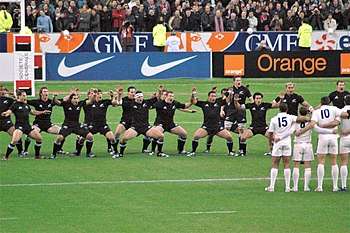
Māori participate fully in New Zealand's sporting culture, and are well-represented in rugby union, rugby league and netball teams at all levels. The New Zealand national rugby union team performs a haka, a traditional Māori challenge, before international matches.[108] As well as participation in national sports teams, there are Māori rugby union, rugby league and cricket representative teams that play in international competitions.
At the 2016 Summer Olympics in Rio de Janeiro, 41 of the 199 competitors (20.5 per cent) were of Māori descent in the New Zealand delegation, with the rugby sevens squads alone having 17 Māori competitors (out of 24). There were also three competitors of Māori descent in the Australian delegation.[109]
Ki-o-rahi and tapawai are two ball sports of Māori origin. Ki-o-rahi received an unexpected boost when McDonald's chose it to represent New Zealand.[110] Waka ama (outrigger canoeing) has also experienced a resurgence of interest in New Zealand since the 1980s.[111]
Language

The Māori language, also known as te reo Māori (pronounced [ˈmaːoɾi, te ˈɾeo ˈmaːoɾi]) or simply Te Reo ("the language"), has the status of an official language. Linguists classify it within the Eastern Polynesian languages as being closely related to Cook Islands Māori, Tuamotuan and Tahitian. Before European contact Māori did not have a written language and "important information such as whakapapa was memorised and passed down verbally through the generations".[113] Māori were familiar with the concept of maps and when interacting with missionaries in 1815 could draw accurate maps of their rohe (iwi boundaries), onto paper, that were the equal of European maps. Missionaries surmised that Māori had traditionally drawn maps on sand or other natural materials.[114]
From about 1890, Māori members of Parliament realised the importance of English literacy to Māori and insisted that all Māori children be taught in English. Missionaries, who still ran many Māori schools, had been teaching exclusively in Māori but the Māori MPs insisted this should stop. However attendance at school for many Māori was intermittent. In many areas of New Zealand, Māori lost its role as a living community language used by significant numbers of people in the post-war years. In tandem with calls for sovereignty and for the righting of social injustices from the 1970s onwards, New Zealand schools now teach Māori culture and language as an option, and pre-school kohanga reo ("language-nests") have started, which teach tamariki (young children) exclusively in Māori. These now extend right through secondary schools (kura tuarua). Most preschool centres teach basics such as colours, numerals and greetings in Māori songs and chants.[115]
Māori Television, a government-funded channel committed to broadcasting primarily in Te Reo, began in March 2004.[65] The 1996 census reported 160,000 Māori speakers.[116] At the time of the 2013 census 125,352 Māori (21.3 per cent) reported a conversational level of proficiency.[117]
Society
Historical development
Polynesian settlers in New Zealand developed a distinct society over several hundred years. Social groups were tribal, with no unified society or single Māori identity until after the arrival of Europeans. Nevertheless, common elements could be found in all Māori groups in pre-European New Zealand, including a shared Polynesian heritage, a common basic language, familial associations, traditions of warfare, and similar mythologies and religious beliefs.[118]
Most Māori lived in villages, which were inhabited by several whānau (extended families) who collectively formed a hapū (clan or subtribe). Members of a hapū cooperated with food production, gathering resources, raising families and defence. Māori society across New Zealand was broadly stratified into three classes of people: rangatira, chiefs and ruling families; tūtūā, commoners; and mōkai, slaves. Tohunga also held special standing in their communities as specialists of revered arts, skills and esoteric knowledge.[119][120]
Shared ancestry, intermarriage and trade strengthened relationships between different groups. Many hapū with mutually-recognised shared ancestry formed iwi, or tribes, which were the largest social unit in Māori society. Hapū and iwi often united for expeditions to gather food and resources, or in times of conflict. In contrast, warfare developed as an integral part of traditional life, as different groups competed for food and resources, settled personal disputes, and sought to increase their prestige and authority.[119]
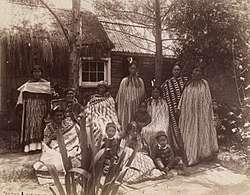
Early European settlers introduced tools, weapons, clothing and foods to Māori across New Zealand, in exchange for resources, land and labour. Māori began selectively adopting elements of Western society during the 19th century, including European clothing and food, and later Western education, religion and architecture.[121] However, as the 19th century wore on, relations between European colonial settlers and different Māori groups became increasingly strained. Tensions led to widespread conflict in the 1860s, and the confiscation of millions of acres of Māori land. Significant amounts of land were also purchased by the colonial government and later through the Native Land Court.
20th century
By the start of the 20th century, a greater awareness had emerged of a unified Māori identity, particularly in comparison to Pākehā, who now overwhelmingly outnumbered the Māori as a whole. Māori and Pākehā societies remained largely separate—socially, culturally, economically and geographically—for much of the 19th and early 20th centuries.[122] The key reason for this was that Māori remained almost exclusively a rural population, whereas increasingly the European population was urban especially after 1900. Nevertheless, Māori groups continued to engage with the government and in legal processes to increase their standing in (and ultimately further their incorporation into) wider New Zealand society.[123] The main point of contact with the government were the four Māori Members of Parliament.
Many Māori migrated to larger rural towns and cities during the Depression and post-WWII periods in search of employment, leaving rural communities depleted and disconnecting many urban Māori from their traditional social controls and tribal homelands. Yet while standards of living improved among Māori, they continued to lag behind Pākehā in areas such as health, income, skilled employment and access to higher levels of education. Māori leaders and government policymakers alike struggled to deal with social issues stemming from increased urban migration, including a shortage of housing and jobs, and a rise in urban crime, poverty and health problems.[124]
In regards to housing, a 1961 census revealed significant differences in the living conditions of Māori and Europeans. That year, out of all the (unshared) non-Māori private dwellings in New Zealand, 96.8 per cent had a bath or shower, 94.1 per cent a hot water service, 88.7 per cent a flush toilet, 81.6 per cent a refrigerator, and 78.6 per cent an electric washing machine. By contrast, for all (unshared) Māori private dwellings that same year, 76.8 per cent had a bath or shower, 68.9 per cent a hot water service, 55.8 per cent a refrigerator, 54.1 per cent a flush toilet, and 47 per cent an electric washing machine.[125]
While the arrival of Europeans had a profound impact on the Māori way of life, many aspects of traditional society have survived into the 21st century. Māori participate fully in all spheres of New Zealand culture and society, leading largely Western lifestyles while also maintaining their own cultural and social customs. The traditional social strata of rangatira, tūtūā and mōkai have all but disappeared from Māori society, while the roles of tohunga and kaumātua are still present. Traditional kinship ties are also actively maintained, and the whānau in particular remains an integral part of Māori life.[126]
Marae, hapū and iwi
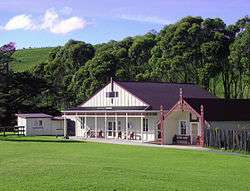
Māori society at a local level is particularly visible at the marae. Formerly the central meeting spaces in traditional villages, marae today usually comprise a group of buildings around an open space, that frequently host events such as weddings, funerals, church services and other large gatherings, with traditional protocol and etiquette usually observed. They also serve as the base of one or sometimes several hapū.[127]
Most Māori affiliate with one or more iwi (and hapū), based on genealogical descent (whakapapa). Iwi vary in size, from a few hundred members to over 100,000 in the case of Ngāpuhi. Many people do not live in their traditional tribal regions as a result of urban migration.
Iwi are usually governed by rūnanga (governing councils or trust boards) which represent the iwi in consultations and negotiations with the New Zealand government. Rūnanga also manage tribal assets and spearhead health, education, economic and social initiatives to help iwi members.
Socioeconomic challenges
Māori on average have fewer assets than the rest of the population, and run greater risks of many negative economic and social outcomes. Over 50 per cent of Māori live in areas in the three highest deprivation deciles, compared with 24 per cent of the rest of the population.[128]
Although Māori make up only 14 per cent of the population, they make up almost 50 per cent of the prison population.[129] Māori have higher unemployment rates than other cultures resident in New Zealand, which is believed to partially account for their over-representation in the criminal justice system; many young Māori, finding themselves unemployed, are picked up for alcohol-related behaviours or small crimes such as vandalism.[130] Underemployment is in turn attributed to persistent institutional racism in New Zealand.[131][132]
Māori have higher numbers of suicides than non-Māori.[133] "Only 47 per cent of Māori school-leavers finish school with qualifications higher than NCEA Level One; compared to 74 per cent European; 87 per cent Asian."[134] Although New Zealand rates very well globally in the PISA rankings that compare national performance in reading, science and maths, "once you disaggregate the PISA scores, Pakeha students are second in the world and Māori are 34th."[135] Māori suffer more health problems, including higher levels of alcohol and drug abuse, smoking and obesity. Less frequent use of healthcare services mean that late diagnosis and treatment intervention lead to higher levels of morbidity and mortality in many manageable conditions, such as cervical cancer,[136] diabetes[137] per head of population than non-Māori.[138] Although Māori life expectancy rates have increased dramatically in the last 50 years, they still have considerably lower life-expectancies compared to New Zealanders of European ancestry: in 2004, Māori males lived 69.0 years vs. non-Māori males 77.2 years; Māori females 73.2 yrs vs. non-Māori females 81.9 years.[139] This gap had narrowed by 2013: 72.8 years for men and 76.5 years for women, compared to 80.2 years for non-Māori men and 83.7 years for non-Māori women.[140] Also, a recent study by the New Zealand Family Violence Clearinghouse showed that Māori women and children are more likely to experience domestic violence than any other ethnic group.[141]
Race relations
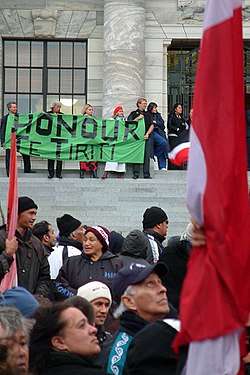
The status of Māori as the indigenous people of New Zealand is recognised in New Zealand law by the term tangata whenua (lit. "people of the land"), which identifies the traditional connection between Māori and a given area of land. Māori as a whole can be considered as tangata whenua of New Zealand entirely (excepting the Chatham Islands, where the tangata whenua are Moriori); individual iwi are recognised as tangata whenua for areas of New Zealand in which they are traditionally based (known in Māori as rohe), while hapū are tangata whenua within their marae. New Zealand law periodically requires consultation between the government and tangata whenua—for example, during major land development projects. This usually takes the form of negotiations between local or national government and the rūnanga of one or more relevant iwi, although the government generally decides which (if any) concerns are acted upon.
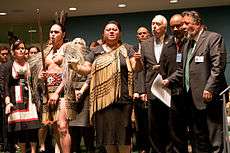
Māori issues are a prominent feature of race relations in New Zealand. Historically, many Pākehā viewed race relations in their country as being the "best in the world", a view that prevailed until Māori urban migration in the mid-20th century brought cultural and socioeconomic differences to wider attention.[142]
Māori protest movements grew significantly in the 1960s and 1970s seeking redress for past grievances, particularly in regard to land rights. Successive governments have responded by enacting affirmative action programmes, funding cultural rejuvenation initiatives and negotiating tribal settlements for past breaches of the Treaty of Waitangi.[143] Further efforts have focused on reducing socioeconomic disparity.[144]
Nevertheless, race relations remains a contentious issue in New Zealand society. Māori advocates continue to push for further redress claiming that their concerns are being marginalised or ignored. A 2007 Department of Corrections report found that Māori are disproportionately represented in the criminal justice system not only because they commit more crimes but also because they face prejudice at many levels: "a number of studies have shown evidence of greater likelihood, associated only with ethnicity, for Māori offenders to have police contact, be charged, lack legal representation, not be granted bail, plead guilty, be convicted, be sentenced to non-monetary penalties, and be denied release to Home Detention".[145] Conversely, critics denounce the scale of assistance given to Māori as amounting to preferential treatment for a select group of people based on race.[71] Both sentiments were highlighted during the foreshore and seabed controversy in 2004, in which the New Zealand government claimed sole ownership of the New Zealand foreshore and seabed, over the objections of Māori groups who were seeking customary title.[146]
Commerce
Wider commercial exposure has increased public awareness of the Māori culture, but has also resulted in several legal disputes. Between 1998 and 2006, Ngāti Toa attempted to trademark the haka "Ka Mate" to prevent its use by commercial organisations without their permission.[147] In 2001, Danish toymaker Lego faced legal action by several Māori tribal groups opposed to them trademarking Māori words used in the Bionicle product range.[148]
Political representation
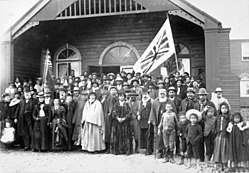

Māori have been involved in New Zealand politics since the Declaration of the Independence of New Zealand, before the Treaty of Waitangi was signed in 1840. Māori have had reserved seats in the New Zealand Parliament since 1868: presently, this accounts for seven of the 120 seats in New Zealand's unicameral parliament. The contesting of these seats was the first opportunity for many Māori to participate in New Zealand elections, although the elected Māori representatives initially struggled to assert significant influence. Māori received universal suffrage with other New Zealand citizens in 1893.
Being a traditionally tribal people, no one organisation ostensibly speaks for all Māori nationwide. The Māori King Movement originated in the 1860s as an attempt by several iwi to unify under one leader: in modern times, it serves a largely ceremonial role. Another attempt at political unity was the Kotahitanga Movement, which established a separate Māori Parliament that held annual sessions from 1892 until its last sitting in 1902.[150]
There are seven designated Māori seats in the New Zealand Parliament (and Māori can and do stand in and win general roll seats), and consideration of and consultation with Māori have become routine requirements for councils and government organisations.[151]
Debate occurs frequently as to the relevance and legitimacy of the Māori electoral roll and seats. The National Party announced in 2008 it would abolish the seats when all historic Treaty settlements have been resolved, which it aimed to complete by 2014.[152] However, after the election National reached an agreement with the Māori Party not to abolish the seats until Māori give their approval.[153]
Several Māori political parties have formed over the years to improve the position of Māori in New Zealand society. The present Māori Party, formed in 2004, secured 1.32 per cent of the party vote at the 2014 general election and held two seats in the 51st New Zealand Parliament, with two MPs serving as Ministers outside Cabinet. The party did not achieve any representatives in the 52nd New Zealand Parliament.[154]
Notes
- ^i : Māori has cognates in other Polynesian languages such as Hawaiian maoli, Tahitian mā'ohi, and Cook Islands Māori māori which all share similar meanings.
- ^ii : The orthographic conventions developed by the Māori Language Commission (Te Taura Whiri i te Reo Māori) recommend the use of the macron (ā ē ī ō ū) to denote long vowels. Contemporary English-language usage in New Zealand tends to avoid the anglicised plural form of the word Māori with an "s": The Māori language generally marks plurals by changing the article rather than the noun, for example: te waka (the canoe); ngā waka (the canoes).
- ^iii : In 2003, Christian Cullen became a member of the Māori rugby team despite having, according to his father, about 1/64 Māori ancestry.[155]
- ^iv : Although, as noted elsewhere in this article, evidence is increasingly pointing to 1280 as the earliest date of settlement.
- ^v : Teeterree in traditional orthography.
References
- "Māori Population Estimates: At 30 June 2017 – tables". www.stats.govt.nz. Retrieved 17 November 2018.
- "2016 Census Community Profiles: Australia". www.censusdata.abs.gov.au. Retrieved 28 October 2017.
- Walrond, Carl (4 March 2009). "Māori overseas". Te Ara: The Encyclopedia of New Zealand. Retrieved 7 December 2010.
- New Zealand-born figures from the 2000 U.S. Census; maximum figure represents sum of "Native Hawaiian and Other Pacific Islander" and people of mixed race. United States Census Bureau (2003)."Census 2000 Foreign-Born Profiles (STP-159): Country of Birth: New Zealand" (PDF). (103 KB). Washington, D.C.: U.S. Census Bureau.
- Government of Canada, Statistics Canada (25 October 2017). "Ethnic Origin (279), Single and Multiple Ethnic Origin Responses (3), Generation Status (4), Age (12) and Sex (3) for the Population in Private Households of Canada, Provinces and Territories, Census Metropolitan Areas and Census Agglomerations, 2016 Census – 25% Sample Data". www12.statcan.gc.ca.
- "Maori". Oxford English Dictionary (3rd ed.). Oxford University Press. September 2005. (Subscription or UK public library membership required.)
- Walters, Richard; Buckley, Hallie; Jacomb, Chris; Matisoo-Smith, Elizabeth (7 October 2017). "Mass Migration and the Polynesian Settlement of New Zealand". Journal of World Prehistory. 30 (4): 351–376. doi:10.1007/s10963-017-9110-y.
- Taonga, New Zealand Ministry for Culture and Heritage Te Manatu. "1. – Moriori – Te Ara Encyclopedia of New Zealand". teara.govt.nz. Retrieved 13 December 2018.
- Atkinson, A. S. (1892)."What is a Tangata Maori?" Journal of the Polynesian Society, 1 (3), 133–136. Retrieved 18 December 2007.
- e.g. kanaka maoli, meaning native Hawaiian. (In the Hawaiian language, the Polynesian letter "T" regularly becomes a "K," and the Polynesian letter "R" regularly becomes an "L")
- "Entries for MAQOLI [PN] True, real, genuine: *ma(a)qoli". pollex.org.nz.
- Eastern Polynesian languages
- "Native Land Act | New Zealand [1862]". Encyclopedia Britannica. Retrieved 8 July 2017.
- "tangata whenua". Māori Dictionary. Retrieved 8 July 2017.
- McIntosh (2005), p. 45
- Walters, Richard; Buckley, Hallie; Jacomb, Chris; Matisoo-Smith, Elizabeth (7 October 2017). "Mass Migration and the Polynesian Settlement of New Zealand". Journal of World Prehistory. 30 (4): 351–376. doi:10.1007/s10963-017-9110-y.
- Shapiro, HL (1940). "The physical anthropology of the Maori-Moriori". The Journal of the Polynesian Society. 49 (1(193)): 1–15. JSTOR 20702788.
- Wilmshurst, J. M.; Hunt, T. L.; Lipo, C. P.; Anderson, A. J. (2010). "High-precision radiocarbon dating shows recent and rapid initial human colonization of East Polynesia". Proceedings of the National Academy of Sciences. 108 (5): 1815–1820. Bibcode:2011PNAS..108.1815W. doi:10.1073/pnas.1015876108. PMC 3033267. PMID 21187404.
- Lowe, David J. (November 2008). Polynesian settlement of New Zealand and the impacts of volcanism on early Maori society: an update (PDF). Guidebook for Pre-conference North Island Field Trip A1 'Ashes and Issues'. p. 142. ISBN 978-0-473-14476-0. Retrieved 18 January 2010.
- Bunce, Michael; Beavan, Nancy R.; Oskam, Charlotte L.; Jacomb, Christopher; Allentoft, Morten E.; Holdaway, Richard N. (7 November 2014). "An extremely low-density human population exterminated New Zealand moa". Nature Communications. 5: 5436. Bibcode:2014NatCo...5.5436H. doi:10.1038/ncomms6436. ISSN 2041-1723. PMID 25378020.
- Jacomb, Chris; Holdaway, Richard N.; Allentoft, Morten E.; Bunce, Michael; Oskam, Charlotte L.; Walter, Richard; Brooks, Emma (2014). "High-precision dating and ancient DNA profiling of moa (Aves: Dinornithiformes) eggshell documents a complex feature at Wairau Bar and refines the chronology of New Zealand settlement by Polynesians". Journal of Archaeological Science. 50: 24–30. doi:10.1016/j.jas.2014.05.023.
- Roberton, J.B.W. (1956). "Genealogies as a basis for Maori chronology". Journal of the Polynesian Society. 65 (1): 45–54.
- Te Hurinui, Pei (1958). "Maori genealogies". Journal of the Polynesian Society. 67 (2): 162–165.
- "Nga Kakano: 1100 – 1300", Te Papa
- "The Moa Hunters", 1966, An Encyclopaedia of New Zealand
- "Maori Colonisation". An Encyclopaedia of New Zealand.
- "Wairau Bar Excavation Study ", University of Otago
- McFadgen, Bruce G.; Adds, Peter (18 February 2018). "Tectonic activity and the history of Wairau Bar, New Zealand's iconic site of early settlement". Journal of the Royal Society of New Zealand: 1–15. doi:10.1080/03036758.2018.1431293.
- Anderson, Atholl. "The Making of the Māori Middle Ages". Open Systems Journal. Retrieved 18 August 2019.
- Rawlence, Nicholas J.; Kardamaki, Afroditi; Easton, Luke J.; Tennyson, Alan J.D.; Scofield, R. Paul; Waters, Jonathan M. (26 July 2017). "Ancient DNA and morphometric analysis reveal extinction and replacement of New Zealand's unique black swans". Proceedings of the Royal Society B: Biological Sciences. 284 (1859): 20170876. doi:10.1098/rspb.2017.0876. PMC 5543223. PMID 28747476.
- Till, Charlotte E.; Easton, Luke J.; Spencer, Hamish G.; Schukard, Rob; Melville, David S.; Scofield, R. Paul; Tennyson, Alan J.D.; Rayner, Matt J.; Waters, Jonathan M.; Kennedy, Martyn (October 2017). "Speciation, range contraction and extinction in the endemic New Zealand King Shag". Molecular Phylogenetics and Evolution. 115: 197–209. doi:10.1016/j.ympev.2017.07.011. PMID 28803756.
- Oskam, Charlotte L.; Allentoft, Morten E.; Walter, Richard; Scofield, R. Paul; Haile, James; Holdaway, Richard N.; Bunce, Michael; Jacomb, Chris (2012). "Ancient DNA analyses of early archaeological sites in New Zealand reveal extreme exploitation of moa (Aves: Dinornithiformes) at all life stages". Quaternary Science Reviews. 53: 41–48. Bibcode:2012QSRv...52...41O. doi:10.1016/j.quascirev.2012.07.007.
- Holdaway, Richard N.; Allentoft, Morten E.; Jacomb, Christopher; Oskam, Charlotte L.; Beavan, Nancy R.; Bunce, Michael (7 November 2014). "An extremely low-density human population exterminated New Zealand moa". Nature Communications. 5 (5436): 5436. Bibcode:2014NatCo...5.5436H. doi:10.1038/ncomms6436. PMID 25378020.
- Perry, George L.W.; Wheeler, Andrew B.; Wood, Jamie R.; Wilmshurst, Janet M. (2014). "A high-precision chronology for the rapid extinction of New Zealand moa (Aves, Dinornithiformes)". Quaternary Science Reviews. 105: 126–135. Bibcode:2014QSRv..105..126P. doi:10.1016/j.quascirev.2014.09.025.
- Neich Roger, 2001. Carved Histories: Rotorua Ngati Tarawhai Woodcarving. Auckland: Auckland University Press, pp 48–49.
- HONGI HIKA (c. 1780–1828) Ngapuhi war chief, An Encyclopaedia of New Zealand.
- Masters, Catherine (8 September 2007). "'Battle rage' fed Maori cannibalism". The New Zealand Herald. Retrieved 19 October 2011.
- James Cowan, The New Zealand Wars: A History of the Maori Campaigns and the Pioneering Period: Volume II, 1922.
- Moon, Paul (2008). This Horrid Practice. Penguin Random House New Zealand Limited. ISBN 9781742287058. Retrieved 9 December 2019.
This book is a study of traditional Maori cannibalism, from its Polynesian origins through to its concluding phase in the early nineteenth century.
- Clark, Ross (1994). "Moriori and Māori: The Linguistic Evidence". In Sutton, Douglas (ed.). The Origins of the First New Zealanders. Auckland: Auckland University Press. pp. 123–135.
- Baofu, Peter (2010). The Future of Post-Human War and Peace: A Preface to a New Theory of Aggression and Pacificity. Cambridge Scholars Publishing. p. 257. ISBN 978-1-4438-2171-1. Retrieved 14 February 2020.
- Sivignon, Cherie (1 October 2017). "Commemoration plans of first encounter between Abel Tasman, Māori 375 years ago". Stuff. Retrieved 19 August 2019.
- Dalrymple, Kayla (28 August 2016). "Unveiling the history of the "Crook Cook"". Gisborne Herald. Retrieved 19 August 2019.
- "Encounter, or murder?". Gisborne Herald. 13 May 2019. Retrieved 19 August 2019.
- Ingram, C. W. N. (1984). New Zealand Shipwrecks 1975–1982. Auckland: New Zealand Consolidated Press; pp 3–6, 9, 12.
- Swarbrick, Nancy (June 2010). "Creative life – Writing and publishing". Te Ara: The Encyclopedia of New Zealand. Retrieved 22 January 2011.
- Manning, Frederick Edward (1863). "Chapter 13". Old New Zealand: being Incidents of Native Customs and Character in the Old Times by 'A Pakeha Maori': Chapter 13.
every man in a native hapu of, say a hundred men, was absolutely forced on pain of death to procure a musket and ammunition at any cost, and at the earliest possible moment (for, if they did not procure them, extermination was their doom by the hands of those of their country-men who had), the effect was that this small hapu, or clan, had to manufacture, spurred by the penalty of death, in the shortest possible time, one hundred tons of flax, scraped by hand with a shell, bit by bit, morsel by morsel, half-a-quarter of an ounce at a time.
- McLintock, A. H. (1966). "Maori health and welfare". An Encyclopaedia of New Zealand. Retrieved 19 August 2019.
- Davis, Denise; Solomon, Māui. "Moriori – The impact of new arrivals". Te Ara: The Encyclopedia of New Zealand. Retrieved 29 April 2010.
- Entwisle, Peter (20 October 2006). "Estimating a population devastated by epidemics". Otago Daily Times. Archived from the original on 14 October 2008. Retrieved 13 May 2008.
- Pool, D. I. (March 1973). "Estimates of New Zealand Maori Vital Rates from the Mid-Nineteenth Century to World War I". Population Studies. 27 (1): 117–125. doi:10.2307/2173457. JSTOR 2173457. PMID 11630533.
- Phillips, Jock (1 August 2015). "History of immigration – A growing settlement: 1825 to 1839". Te Ara: The Encyclopedia of New Zealand. Retrieved 4 June 2018.
- Orange, Claudia (20 June 2012). "Treaty of Waitangi – Creating the Treaty of Waitangi". Te Ara: The Encyclopedia of New Zealand. Retrieved 7 June 2018.
- "Te Wherowhero". Ministry for Culture and Heritage. Retrieved 7 June 2018.
- Orange, Claudia (20 June 2012). "Treaty of Waitangi – Interpretations of the Treaty of Waitangi". Te Ara: The Encyclopedia of New Zealand. Retrieved 7 June 2018.
- "Differences between the texts". Ministry for Culture and Heritage. Retrieved 7 June 2018.
- "Land confiscation law passed". nzhistory.govt.nz. Ministry for Culture and Heritage. 18 November 2016. Retrieved 20 August 2019.
- "Māori Land – What Is It and How Is It Administered?". Office of the Auditor-General. Retrieved 20 August 2019.
- King (2003), p. 224
- "Population – Factors and Trends", An Encyclopaedia of New Zealand, edited by A. H. McLintock, published in 1966. Retrieved 18 September 2007.
- "Young Maori Party | Maori cultural association". Encyclopædia Britannica. Retrieved 4 June 2018.
- "Māori – Urbanisation and renaissance". Te Ara: The Encyclopedia of New Zealand.
The Māori renaissance since 1970 has been a remarkable phenomenon.
- "Time Line of events 1950–2000". Schools @ Look4.
- "Te Kōhanga Reo National Trust". Retrieved 10 April 2019.
Te Kōhanga Reo National Trust Board was established in 1982 and formalised as a charitable trust in 1983. The Mission of the Trust is the protection of Te reo, tikanga me ngā āhuatanga Māori by targeting the participation of mokopuna and whānau into the Kōhanga Reo movement and its Vision is to totally immerse Kōhanga mokopuna in Te Reo, Tikanga me ngā āhuatanga Māori.
- "Māori Television Launch | Television". www.nzonscreen.com. NZ On Screen. Retrieved 29 June 2017.
- Maori Television (9 March 2008). "Maori Television launches second channel". Maori Television. Archived from the original on 24 January 2008.
- "Māori Words used in New Zealand English". Māori Language.net. Native Council. Retrieved 20 August 2019.
- "Waitangi Tribunal created". Ministry for Culture and Heritage. 19 January 2017. Retrieved 4 June 2018.
- Office of Treaty Settlements (June 2008). "Four Monthly Report" (PDF). Archived from the original (PDF) on 18 October 2008. Retrieved 25 September 2008.
- James, Colin (6 September 2005). "Ethnicity takes its course despite middle-class idealism". The New Zealand Herald. Retrieved 19 October 2011.
- "The Treaty of Waitangi debate". TVNZ. 15 October 2011. Archived from the original on 1 March 2012. Retrieved 15 October 2011.
- Report on the Crown's Foreshore and Seabed Policy (Report). Ministry of Justice. Retrieved 19 August 2019.
- Barker, Fiona (June 2012). "Debate about the foreshore and seabed". Te Ara: The Encyclopedia of New Zealand. Retrieved 19 August 2019.
- "New Zealand's population reflects growing diversity | Stats NZ". www.stats.govt.nz. Retrieved 29 April 2020.
- "Ethnic group (detailed total response - level 3) by age and sex, for the census usually resident population count, 2006, 2013, and 2018 Censuses (RC, TA, SA2, DHB)". nzdotstat.stats.govt.nz. Retrieved 29 April 2020.
- Statistics New Zealand. "2013 Census QuickStats About Māori". Retrieved 20 December 2013.
- "Ethnic group (detailed single and combination) by age group and sex, for the census usually resident population count, 2013 -- NZ.Stat". Statistics New Zealand. Retrieved 16 August 2014.
- "Māori Descent: Definition". Statistics New Zealand. Retrieved 19 August 2019.
- Hamer, Paul (2012), Māori in Australia: An Update from the 2011 Australian Census and the 2011 New Zealand General Election, SSRN 2167613
- "Sharples suggests Maori seat in Australia". Television New Zealand. 1 October 2007. Retrieved 9 January 2011.
- New Zealand-born figures from the 2000 U.S. Census; maximum figure represents sum of "Native Hawaiian and Other Pacific Islander" and people of mixed race. United States Census Bureau (2003)."Census 2000 Foreign-Born Profiles (STP-159): Country of Birth: New Zealand" (PDF). (103 KB). Washington, D.C.: U.S. Census Bureau.
- Statistics Canada (2003).(232), Sex (3) and Single and Multiple Responses (3) for Population, for Canada, Provinces, Territories, Census Metropolitan Areas and Census Agglomerations, 2001 Census – 20% Sample Data. Ottawa: Statistics Canada, Cat. No. 97F0010XCB2001001.
- King, Michael (2003). The Penguin History of New Zealand. London: Penguin. p. 91.
- Howe (2006), pp 25–40
- .Howe (2003), p. 161
- Schwimmer, E. G. (September 1961). "Warfare of the Maori". Te Ao Hou.
- https://www.countiesmanukau.health.nz/assets/About-CMH/Demographics-and-populations/Census-2013-profile-for-residents-of-Counties-Manukau.pdf
- "New Zealand – International Religious Freedom Report 2007". U.S. State Department. Retrieved 29 April 2010.
- "Kia Ora Aotearoa". CPI Financial. August 2007. Retrieved 29 April 2010.
- Hume, Tim. "Muslim faith draws converts from NZ prisons." Star Times
- Onnudottir, Helena; Possamai, Adam; Turner, Bryan (2012). "Islam and Indigenous Populations in Australia and New Zealand". Muslims in the West and the Challenges of Belonging: 60–86. Retrieved 10 March 2017.
- "2013 Census QuickStats about culture and identity – tables". Statistics New Zealand. 15 April 2014. Retrieved 18 July 2015.
- "The Tangi - Religion and spirituality - Tapu and Noa". The Maori - Spirituality - New Zealand in History. New Zealand in History. Retrieved 31 March 2020.
- Hanly, Gil. "Shoes at the door of the wharenui". Te Ara Encyclopedia of New Zealand – Te Ara Encyclopedia of New Zealand. Retrieved 31 March 2020.
- Keane, Basil (5 May 2011). "Traditional Māori religion – ngā karakia a te Māori - Rituals and ceremonies". Te Ara: The Encyclopedia of New Zealand. Retrieved 5 April 2020.
- "The Haka - Dance of War - Maori Haka". newzealand. New Zealand Tourism. Retrieved 31 March 2020.
- Keane, Basil (5 September 2013). "Marae protocol – te kawa o te marae - Pōwhiri process". Te Ara: The Encyclopedia of New Zealand. Retrieved 5 April 2020.
- Diamond, Paul (5 March 2010). "Te tāpoi Māori—Māori tourism—Preserving culture". Te Ara: The Encyclopedia of New Zealand. Retrieved 18 May 2010.
- Swarbrick, Nancy (3 March 2009). "Creative life – Performing arts". Te Ara: The Encyclopedia of New Zealand. Archived from the original on 15 May 2011. Retrieved 18 May 2010.
- Baillie, Russell (24 January 2006). "Other NZ hits eat dust of 'Fastest Indian'". The New Zealand Herald. Retrieved 22 August 2009.
- "Aramoana film cracks $1 million". The New Zealand Herald. 14 December 2006. Retrieved 22 August 2009.
- "Awards for Once Were Warriors". IMDb. Retrieved 22 August 2009.
- "Details.cfm – Emanuel Levy".
- Lawrence, Derek. "Thor: Ragnarok director Taika Waititi to portray Korg in film". Entertainment Weekly.
- Woerner, Meredith (9 February 2020). "Taika Waititi Dedicates His Oscar Win to the Indigenous Kids of the World". Variety. Retrieved 10 February 2020.
- Mitchell, Wendy (21 May 2010). "Waititi's Boy sets new record for New Zealand film". Screen Daily. screendaily.com. Retrieved 2 December 2011.
- Sharf, Zack (4 April 2016). "Sundance Crowdpleaser 'Hunt for the Wilderpeople' Makes Box Office History in New Zealand". Indiewire.com. Retrieved 6 January 2017.
- Derby, Mark (December 2010). "Māori–Pākehā relations – Sports and race". Te Ara: The Encyclopedia of New Zealand. Retrieved 4 February 2011.
- "43 Māori athletes to head to Rio Olympics". Television New Zealand. 5 August 2016. Retrieved 8 August 2016.
- Jones, Renee (8 October 2005). "McDonald's adopts obscure Maori ball game". The New Zealand Herald. Retrieved 30 July 2007.
- Barclay-Kerr, Hoturoa (September 2013). "Waka ama – outrigger canoeing". Te Ara: The Encyclopedia of New Zealand. Retrieved 12 August 2017.
- 2013 Census QuickStats, Statistics New Zealand, 2013, ISBN 978-0-478-40864-5
- Joyce, B. and Mathers, B. (2006). Whakapapa. An introduction to Maori family history research. Published by the Maori Interest Group of the NZSG Inc.
- He Korero. A.Jones and K.Jenkins. Huia.2011
- "Kohanga Reo". Kiwi Family Media. Retrieved 29 June 2017.
- "QuickStats About Māori". Statistics New Zealand. 2006. Retrieved 14 November 2007. Cite journal requires
|journal=(help) (revised 2007) - "2013 Census QuickStats about Māori". Statistics New Zealand. 3 December 2013. Archived from the original on 12 July 2017. Retrieved 29 June 2017.
- King (1996), pp 37, 43
- King (1996), pp 42–3
- Taonui, Rāwiri (4 March 2009). "Tribal organisation". Te Ara: The Encyclopedia of New Zealand.
- King (1996), pp 46–7, 73–5
- King (1996), pp 195–6
- Hill (2009), pp 519–29
- Sorrenson (1997), pp 339–41
- The Quest for security in New Zealand 1840 to 1966 by William Ball Sutch
- Mead (2003), pp 212–3
- Mead (2003), pp 95–100, 215–6
- Maori Health Web Page: Socioeconomic Determinants of Health–Deprivation. Retrieved 12 June 2007.
- "Over-representation of Maori in the criminal justice system" (PDF). Department of Corrections. September 2007. p. 4. Archived from the original (PDF) on 15 December 2010.
- Department of Labour, NZ Archived 11 August 2010 at the Wayback Machine, Māori Labour Market Outlook
- Hitchcock, Joshua (17 November 2017). "Māori unemployment: there is a way out". Retrieved 17 May 2020.
- Cormack, Donna. "Māori experiences of multiple forms of discrimination: findings from Te Kupenga 2013". Retrieved 17 May 2020.
- University of Otago, NZ, Suicide Rates in New Zealand–Exploring Associations with Social and Economic Factors
- Scoop.co.nz, Flavell: Maori Education – not achieved
- "What drives Hekia Parata?". 6 October 2012 – via Stuff.co.nz.
- Cslbiotherapies.co.nz Archived 23 March 2009 at the Wayback Machine,Who gets Cervical Cancer?
- Diabetes in New Zealand – Models And Forecasts 1996–2011
- PubMed Maori Health Issues
- "Social Report 2004 – Health – Life Expectancy". www.socialreport.msd.govt.nz.
- "Gap closing in life expectancy". 3 News NZ. 16 April 2013. Archived from the original on 3 July 2013.
- "Mana Māori" Archived 14 October 2008 at the Wayback Machine. Community Action Toolkit to Prevent Family Violence Information Sheet #30 (p. 40). Retrieved 16 July 2009.
- King (1999), p. 468
- Lashley (2006), pp 131–3
- Turia, Tariana (7 June 2000). Closing The Gaps (Speech). The Beehive. New Zealand Government. Retrieved 13 March 2020.
- Policy, Strategy and Research Group, Department of Corrections (September 2007). "Over-representation of Māori in the criminal justice system: An exploratory report" (PDF). Department of Corrections (New Zealand). Retrieved 23 May 2017.CS1 maint: multiple names: authors list (link)
- Ford, Chris (24 April 2006). "Race relations in New Zealand". Global Politician. Retrieved 27 November 2010.
- Crewdson, Patrick (2 July 2006). "Iwi claim to All Black haka turned down". The New Zealand Herald. Retrieved 22 December 2010.
- Osborn, Andrew (31 October 2001). "Maoris win Lego battle". The Guardian. Retrieved 15 February 2020.
- "New Zealand – Maori Flags". www.crwflags.com.
- "Te Kotahitanga – the Māori Parliament". Ministry of Women's Affairs. 16 September 2010. Archived from the original on 24 July 2011. Retrieved 5 November 2010.
- "The Origins of the Māori Seats". 31 May 2009. Retrieved 4 June 2018.
- Tahana, Yvonne (29 September 2008). "National to dump Maori seats in 2014". The New Zealand Herald. Retrieved 28 December 2009.
- "Maori Party drops push to entrench Maori seats". RNZ. 17 November 2008. Retrieved 5 March 2016.
- Edwards, Bryce (26 September 2017). "Political Roundup: The emotional Maori Party demise". Retrieved 22 June 2018.
- "Uncovering the Maori mystery". BBC Sport. 5 June 2003.
Bibliography
- Hill, Richard S (2009). "Maori and State Policy". In Byrnes, Giselle (ed.). The New Oxford History of New Zealand. Oxford University Press. ISBN 978-0-19-558471-4.
- Howe, K. R. (2003). The quest for origins: who first discovered and settled the Pacific islands?. University of Hawaii Press. ISBN 978-0-14-301857-5.
- Howe, Kerry (2006). "Ideas of Māori Origins". In Māori Peoples of New Zealand: Ngā Iwi o Aotearoa. Te Ara – The Encyclopedia of New Zealand. Auckland: David Bateman.
- Irwin, Geoffrey (2006). "Pacific Migrations". In Māori Peoples of New Zealand: Ngā Iwi o Aotearoa. Te Ara – The Encyclopedia of New Zealand. Auckland: David Bateman.
- King, Michael (1996). Maori: A Photographic and Social History (2nd ed.). Auckland: Reed Publishing. ISBN 978-0-7900-0500-3.
- King, Michael (2003). The Penguin History of New Zealand. Penguin. ISBN 978-0-14-301867-4.
- Lashley, Marilyn E. (2006). "Remedying Racial and Ethnic Inequality in New Zealand: Reparative and Distributive Policies of Social Justice". In Myers, Samuel L.; Corrie, Bruce P. (eds.). Racial and ethnic economic inequality: an international perspective, volume 1996. New York: Peter Lang. ISBN 978-0-8204-5656-0.
- McIntosh, Tracey (2005), 'Maori Identities: Fixed, Fluid, Forced', in James H. Liu, Tim McCreanor, Tracey McIntosh and Teresia Teaiwa, eds, New Zealand Identities: Departures and Destinations, Wellington: Victoria University Press
- Mead, Hirini Moko (2003). Tikanga Māori: living by Māori values. Wellington: Huia Publishers. ISBN 978-1-877283-88-8.
- Orange, Claudia (1989). The Story of a Treaty. Wellington: Allen & Unwin. ISBN 978-0-04-641053-7.
- Sorrenson, M. P. K (1997). "Modern Māori: The Young Maori Party to Mana Motuhake". In Sinclair, Keith (ed.). The Oxford Illustrated History of New Zealand (2nd ed.). Oxford University Press. ISBN 978-0-19-558381-6.
Further reading
- Ballara, Angela (1998). Iwi: the dynamics of Māori tribal organisation from c. 1769 to c. 1945. The Journal of the Polynesian Society. 108. Wellington: Victoria University Press. pp. 327–329. ISBN 978-0-86473-328-3. JSTOR 20706875.
- Biggs, Bruce (1994). "Does Māori have a closest relative?" In Sutton (Ed.)(1994), pp. 96–105.
- Gagne, Natacha. Being Maori in the City: Indigenous Everyday Life in Auckland (University of Toronto Press; 2013) 368 pages;
- Hiroa, Te Rangi (Sir Peter Buck) (1974). The Coming of the Māori. Second edition. First published 1949. Wellington: Whitcombe and Tombs.
- Irwin, Geoffrey (1992). The Prehistoric Exploration and Colonisation of the Pacific. Cambridge: Cambridge University Press.
- Mclean, Mervyn (1996). "Maori Music". Auckland : Auckland University Press.
- Simmons, D.R. (1997). Ta Moko, The Art of Māori Tattoo. Revised edition. First published 1986. Auckland: Reed
- Sutton, Douglas G. (Ed.) (1994). The Origins of the First New Zealanders. Auckland: Auckland University Press. ISBN 1-86940-098-4
External links
| Look up Māori in Wiktionary, the free dictionary. |
| Wikimedia Commons has media related to Māori. |

